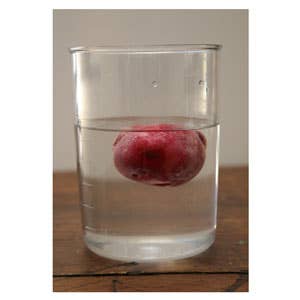
Selecting a Potato
All potatoes are not created equal. For instance, when we began testing the recipe for the Iraqi-Style Beef and Vegetable Stew, we used the potatoes we happened to have on hand: russets. But that turned out to be a mistake. By the time the stew had finished its long, languid simmer, those potatoes had, disappointingly, all but disintegrated.
The most crucial factor in selecting a potato is its starch content. The russet is what is known as a floury or mealy potato—which is to say it's high in starch and low in moisture. During cooking, a floury potato's cells swell with water and pull apart from one another. This makes floury varieties excellent for mashing because they pulverize easily. Slightly less starchy varieties, such as yukon golds and yellow finns, are called all-purpose potatoes because they have enough starch for baking or mashing and enough firmness to hold their shape in a soup.
For our stew, a yukon gold might have performed passably, but we opted for a red bliss potato instead, one of the low-starch varieties known as waxy, for their exceptionally firm, smooth texture. To our delight, they ended their long simmer silky and tender and still looking like potatoes; any waxy potato, such as french fingerling or white rose, would have worked.
Testing a potato's starch level, to determine what kind of cooking it is suited for, is easy: simply combine 2 3⁄4 cups water with 1⁄4 cup all-purpose salt and drop the potato in. If it sinks, it's a floury potato, dense with starch, and if it floats, it's a waxy variety.
Keep Reading
Continue to Next Story










